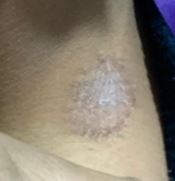Management of Luta Visha (Spider Bite Poisoning) with Ayurveda - A Case Report
DOI:
https://doi.org/10.21760/jaims.10.1.42Keywords:
Luta Visha, Keeta Visha, Shothahara, Dahahar, Vishaghna, KandughnaAbstract
Agadtantra encompasses the knowledge of various types of Visha (poisons) derived from animals or plants. It provides detailed insights into the origin, classification, symptoms, and management of poisoning caused by the bites of Sarpa (snakes), Mushaka (rodents), Keeta (insects), and Luta (spiders). Acharya Vagbhat classified Lutavisha under Keetavisha (insects) due to its resemblance to insect characteristics. The Dosha Avastha of Luta is predominantly Pittakapha, meaning symptoms associated with Pitta and Kapha Doshas are more prominent. In cases of spider poisoning, the primary symptoms include pain, swelling, itching and erythema. Renowned Ayurvedic scholars like Acharya Sushruta, Acharya Vagbhata, and Acharya Bhava Mishra have extensively discussed Luta Visha (spider venom). Globally, over 40,000 species of spiders have been identified, and although only a few are harmful to humans, spider bites are a common concern. Delay in treatment of venomous bites can lead to severe consequences, including death. Therefore, spider bites, especially in endemic areas, should be addressed promptly and taken seriously. This is a case report of 25 yr old male patient with complaints of Vesicular lesion, pain and burning sensation on the posterior aspect of neck in the last 2 days and he was treated with Dushivishari Agad along with external application of Shatdhaut Ghrita which includes Shothahara (anti-inflammatory), Dahahar (cooling), Vishaghna and Kandughna properties. The symptoms were reduced completely within 7days.
Downloads
References
Reddy KSN. The Essentials Of Forensic Medicine And Toxicology. 34th ed. New Delhi: Jaypee; 2017. p. 526.
Murthy S. Astanga Sangrah Samhita Of Vaghabhat. Reprint 2016 ed. Edited by Dr. Sharma S. Uttaratantra; Chapter 44, Verse 19. New Delhi: Chaukhamba Sanskrut Sansthana; 2016. p. 883.
Shastri H. Ashtang Hridaya Samhita Of Vagbhat. Reprint 2019 ed. Annotated by Dr. Kunte AM, Navre K. Uttaratantra; Chapter 37, Verse 58. New Delhi: Chaukhamba Sanskrut Sansthana; 2019. p. 918.
Shastri Ambikadatta. Sushrut Samhita Kalpasthan Sthavarvishavidyaniya Adhyay. Chapter 5, Verse 58-60. Varanasi: Chaukhamba Sanskrit Pratisthan; 2017. p. 64.
Hankare M, et al. A review article on Dushivishari Agad in Dushivishanya skin diseases. World Journal of Pharmaceutical and Medical Research. 2024;10(10):288-292.
Anoka IA, Robb EL, Baker MB. Brown Recluse Spider Toxicity. In: Statpearls. Treasure Island (FL): Statpearls Publishing; 2022. Available from: [https://www.ncbi.nlm.nih.gov/books/NBK537045/]. [Last updated on 2022 Aug 08].
Chaudhari K, et al. Ayurvedic management of unknown insect bite (Keeta Visha) - A case report. Journal of Ayurveda and Integrated Medical Sciences. 2023;8(11).














